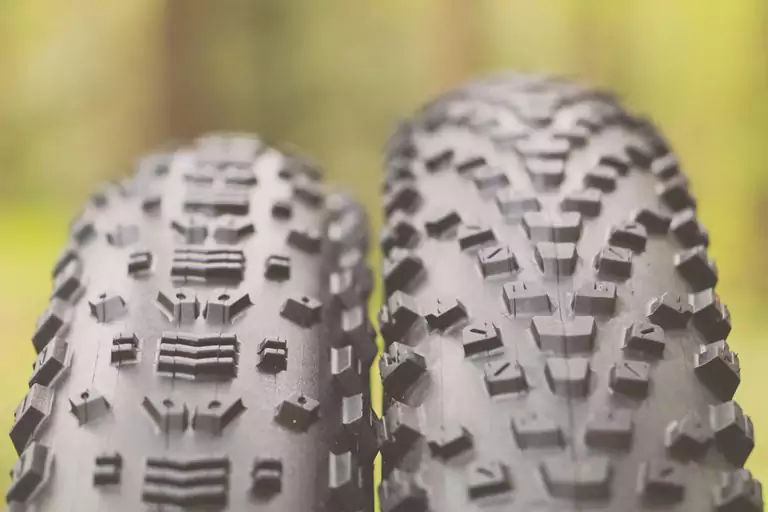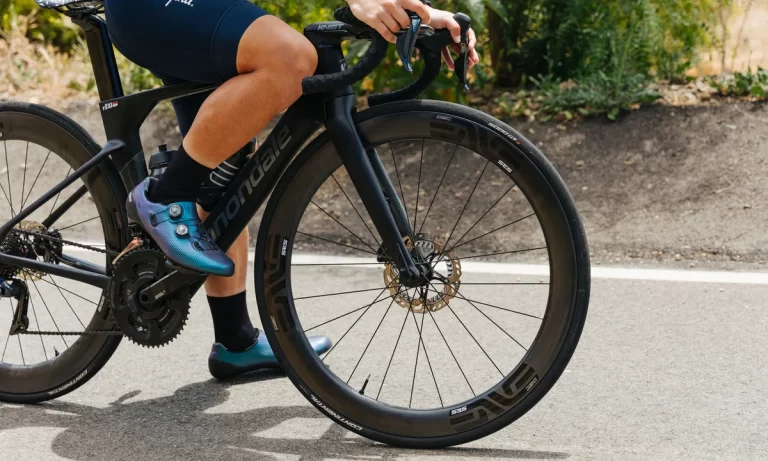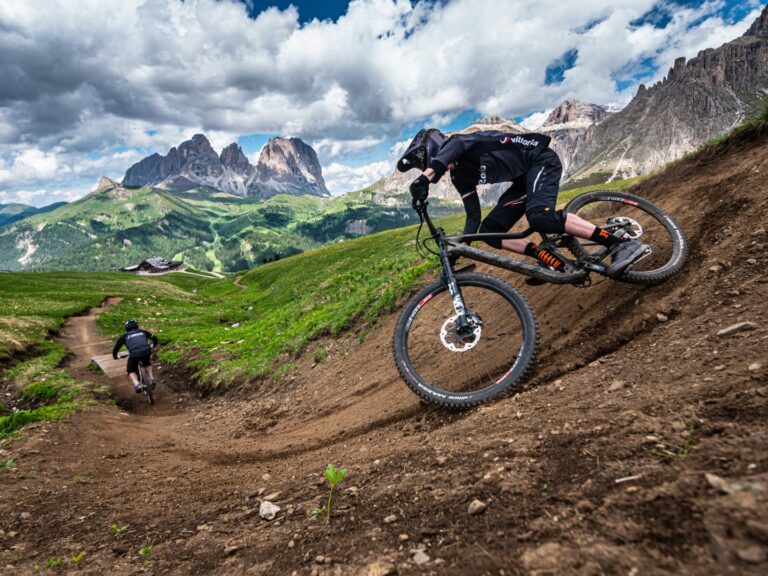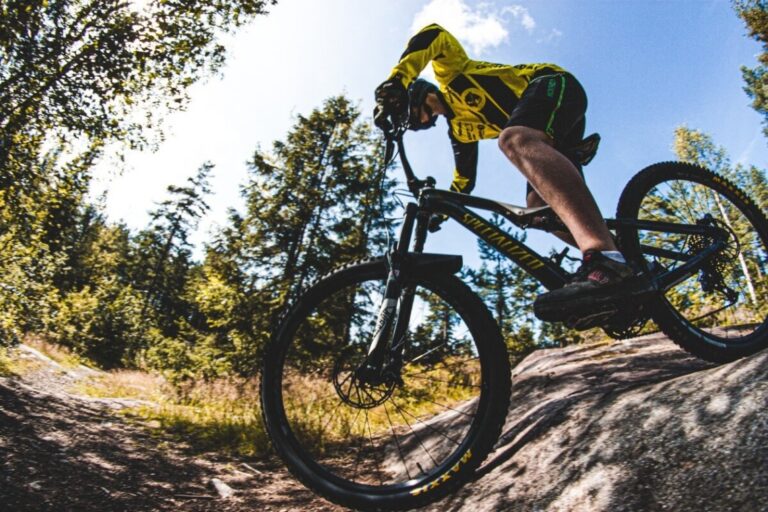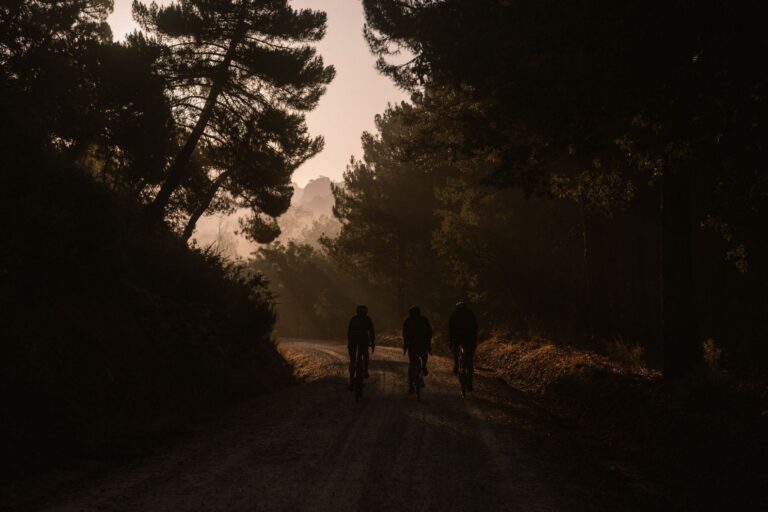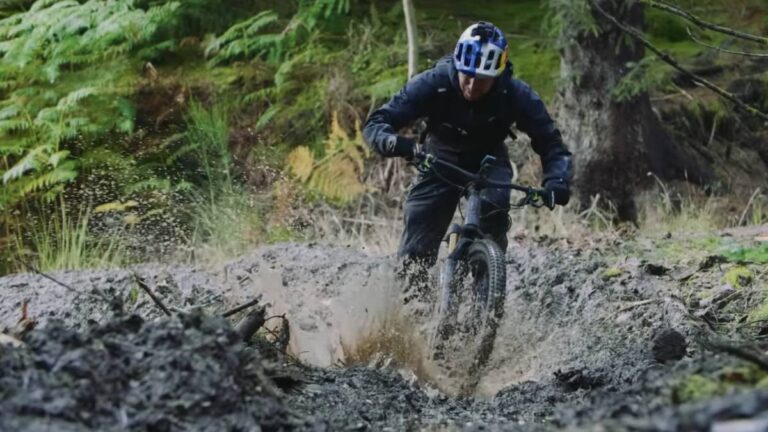Tread Design for Cross Country Bike Tires: Mastering Terrain with the Right Tires
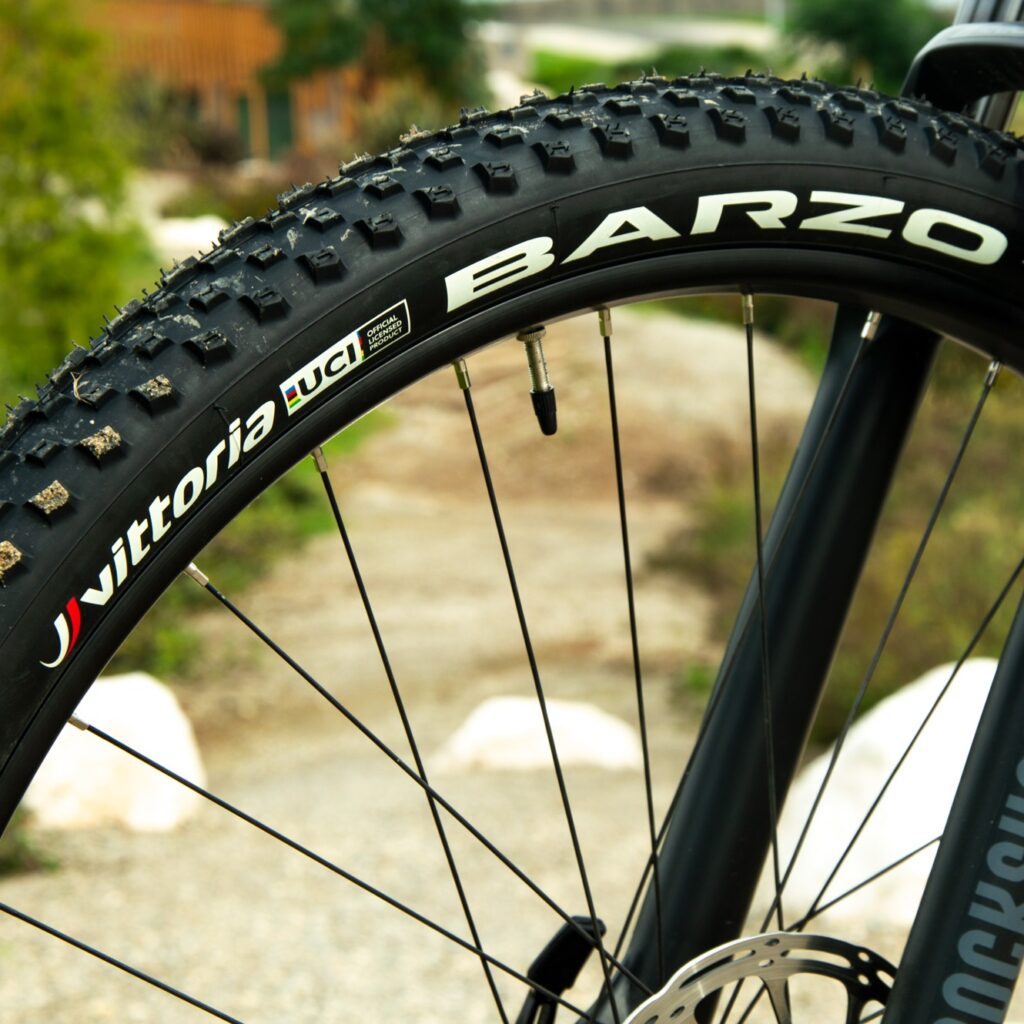
Key Point Summary of Tread Design for Cross Country Bike Tires:
- Importance of Tread Design: Tread design is crucial for optimizing grip and handling across various terrains in cross country biking.
- Types of Tread Patterns: Different patterns are designed for specific conditions, from tight-packed dirt to loose, rocky trails.
- Balancing Grip and Rolling Resistance: Selecting a tread that offers both efficient rolling on smoother surfaces and reliable grip on challenging terrains.
- Tire Width and Pressure Considerations: How tire width and air pressure interact with tread design to influence bike performance.
- Seasonal and Weather Adaptability: Choosing tires with tread designs suitable for different weather conditions and seasons.
As a masters cyclist who has navigated various trails on mountain, gravel, and cyclocross bikes, I’ve come to understand the profound impact of tread design on cross country bike tires. Let’s delve into the nuances of tread design and how it can enhance your cross country biking experience.
The Role of Tread Design in Cross Country Biking
Tread design in cross country bike tires plays a fundamental role in how your bike interacts with the terrain. The right tread pattern can greatly improve your bike’s grip, handling, and overall performance on diverse trails.
Understanding Different Tread Patterns
In cross country biking, tread patterns can vary widely:
- Small, Closely Spaced Knobs: Ideal for hard-packed dirt, providing a balance between grip and rolling efficiency.
- Tall, Widely Spaced Knobs: Better for loose or muddy conditions, as they can dig into the surface for more traction.
- Intermediate Patterns: These are versatile, offering a middle ground for mixed trail conditions.

Grip vs. Rolling Resistance
A major consideration is finding a tread that offers the best compromise between grip and rolling efficiency. While aggressive treads provide better grip in technical terrains, they may increase rolling resistance on smoother sections, and vice versa.
Tire Width and Pressure
Tire width and air pressure also play significant roles in conjunction with tread design:
- Wider Tires: Typically offer better grip due to a larger contact area but can be slower rolling.
- Tire Pressure: Lower pressures can improve grip but too low might increase the risk of punctures or rim damage.
Adaptability to Weather and Seasons
Choosing the right tread pattern also involves considering the weather and season:
- Dry Conditions: You might opt for tires with lower profile knobs for speed.
- Wet and Muddy Conditions: Tires with more aggressive tread patterns can provide the necessary grip.
Advanced Considerations in Tread Design
Tread Compound Variation
- Dual or Multi-Compound Tires: Some cross country tires use different rubber compounds in one tire. Softer compounds on the edges can offer better grip in turns, while harder compounds in the center improve durability and rolling resistance.
Siping on Knobs
- Siping Effects: Small cuts or ‘sipes’ in the tread knobs can improve traction by allowing the knobs to flex, enhancing grip, particularly on hard and slick surfaces.
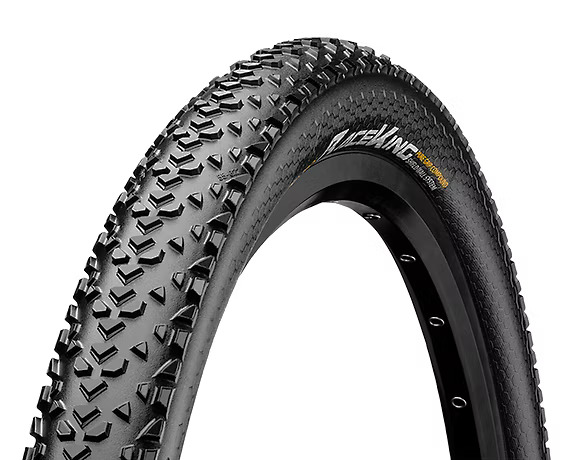
Influence of Tread on Bike Handling
Tread Pattern and Stability
- Cornering and Braking Performance: The arrangement and shape of tread can influence a tire’s cornering and braking performance. Aggressive side knobs enhance cornering grip, while certain center tread patterns can improve braking efficiency.
Vibration Damping
- Tread and Comfort: Certain tread designs can also help in dampening vibrations, providing a more comfortable ride on rough trails, a factor often overlooked but crucial for longer rides.
Tread Wear and Performance Over Time
Longevity of Tread Patterns
- Wear Patterns and Performance: Over time, the performance of tread patterns can change as they wear. Regularly checking the tread for wear can help you understand when performance might be diminishing and replacement is needed.
Evolution of Tread with Wear
- Adapting to Worn Treads: As treads wear, their performance in certain conditions may change. For instance, worn tires might perform better on hardpack but lose efficiency in loose conditions.
Environmental Impact and Tread Design
Eco-Friendly Tread Compounds
- Sustainable Materials in Tires: With a growing focus on sustainability, some manufacturers are exploring eco-friendly materials for tread compounds that offer performance while reducing environmental impact.
Concluding Insights
Continuous Learning and Adaptation
- Stay Informed and Experiment: The field of tire technology is dynamic, with continuous advancements. Staying informed about the latest trends and being willing to experiment can lead to finding the perfect tire for your needs.
Feedback Loop
- Learning from Experience: Pay attention to how different tread designs feel in various conditions. This feedback can guide future tire choices, tailoring them to your specific riding style and trail preferences.
Based on the detailed exploration of tread design and its impact on cross country biking, here are some of the best cross country bike tires that encapsulate the various aspects discussed:
- Schwalbe Racing Ralph: Ideal for a variety of cross country terrains, this tire offers an excellent balance of grip and rolling efficiency. Its advanced tread compound and design make it suitable for both dry and moderately wet conditions.
- Maxxis Ikon: A versatile tire known for its lightweight design and good rolling efficiency. The Ikon’s tread pattern provides effective grip on a wide range of surfaces, making it a popular choice for cross country riders.
- Continental Race King: Renowned for its low rolling resistance and durability, the Race King is a great option for hardpack and dry conditions. Its well-designed tread pattern offers reliable traction while maintaining good speed.
- Vittoria Mezcal: The Mezcal stands out with its unique tread design that provides excellent grip in corners and efficient rolling on straightaways. It’s a strong choice for riders looking for a tire that performs well in diverse conditions.
- Specialized Fast Trak: This tire is designed with an adaptive tread pattern that provides good traction in loose conditions while still rolling fast on hard surfaces. The Fast Trak is a testament to the balance between grip and rolling resistance.
Each of these tires embodies the principles of effective tread design for cross country biking, offering a mix of grip, efficiency, and adaptability to various trail conditions. Remember, the best choice for you will depend on your specific riding style, terrain preferences, and performance priorities.
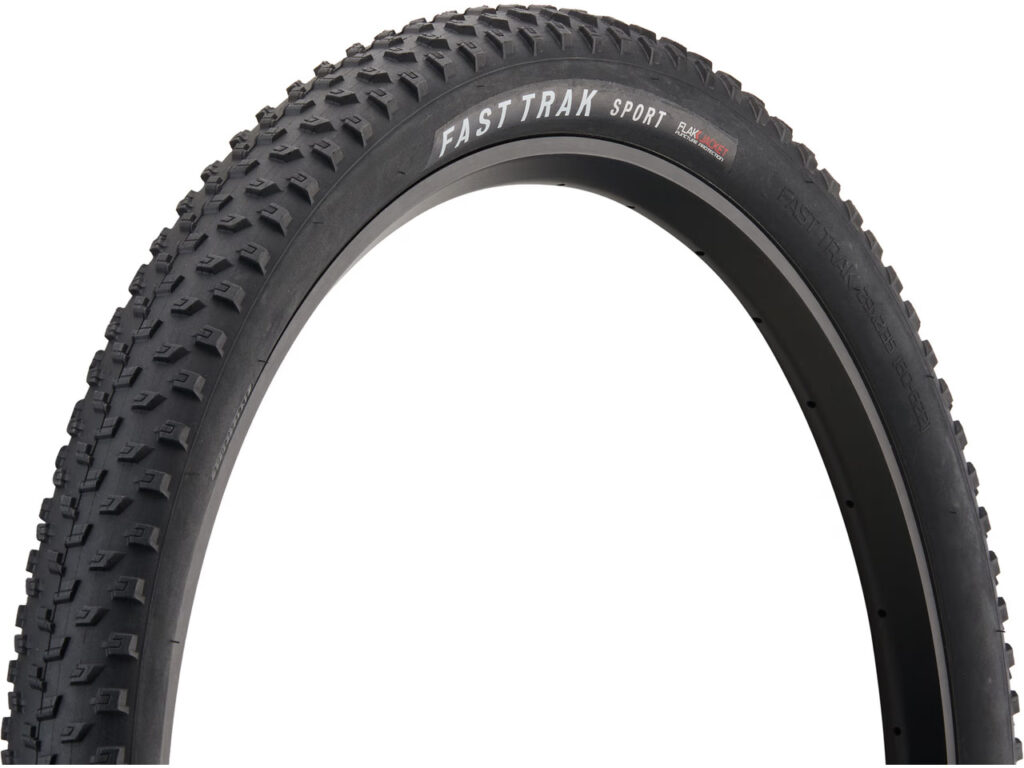
In conclusion, tread design in cross country bike tires is a complex and crucial aspect of biking, impacting everything from grip and stability to comfort and environmental impact. By deepening your understanding and continually adapting to new technologies and terrain challenges, you can significantly enhance your cross country biking experience.
Here’s to finding the perfect tread for your trail adventures!
John
FAQ
Is 2.35 too wide for XC?
No, 2.35 inches is not too wide for XC (cross country) biking. While considered on the wider side, it can offer better traction and comfort, especially on more technical trails.
Which TYRE tread pattern is best for bike?
The best tire tread pattern for a bike depends on the riding conditions: for road biking, a smooth tread is ideal; for off-road or mountain biking, knobby treads provide better grip; and for mixed surfaces like gravel, a semi-knobby or intermediate tread works well.
What are the four types of tire tread designs?
The four main types of tire tread designs are: 1) Slicks for smooth surfaces like roads, 2) Semi-slicks for light off-road and road use, 3) Knobby for off-road conditions like mountain biking, and 4) Inverted tread for a balance of low resistance and grip.
What is the tread pattern on a mountain bike?
The tread pattern on a mountain bike typically consists of large, widely spaced knobs to provide traction on a variety of off-road surfaces like dirt, mud, and rocks.
